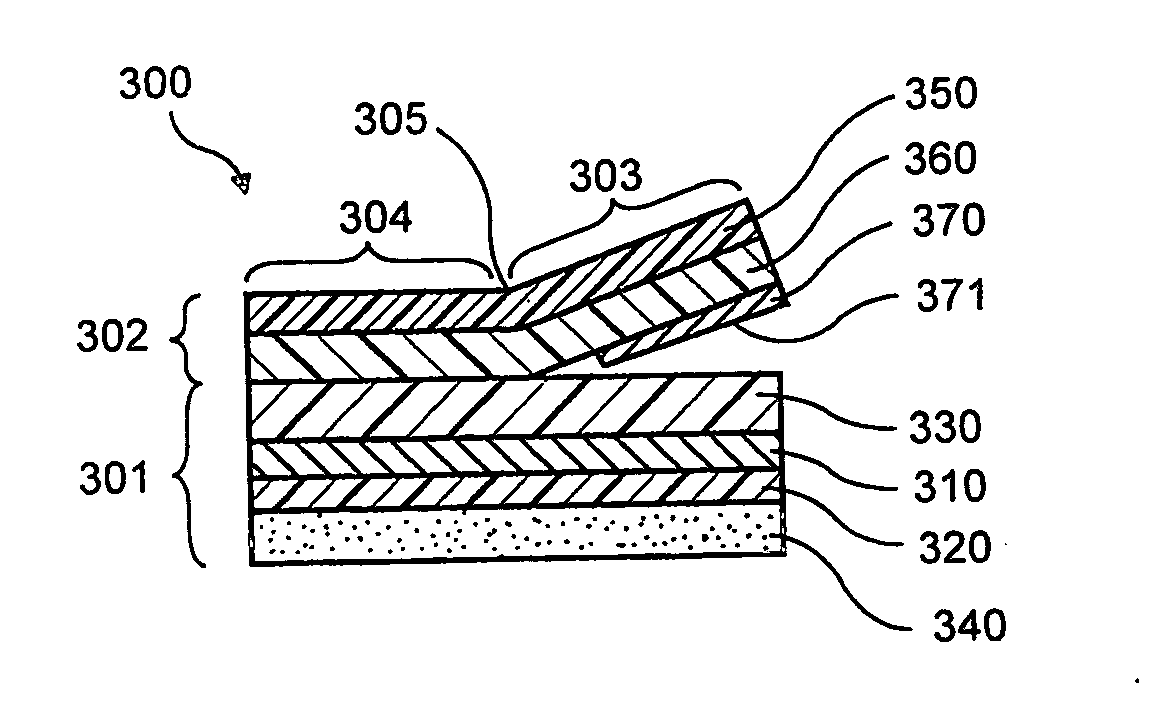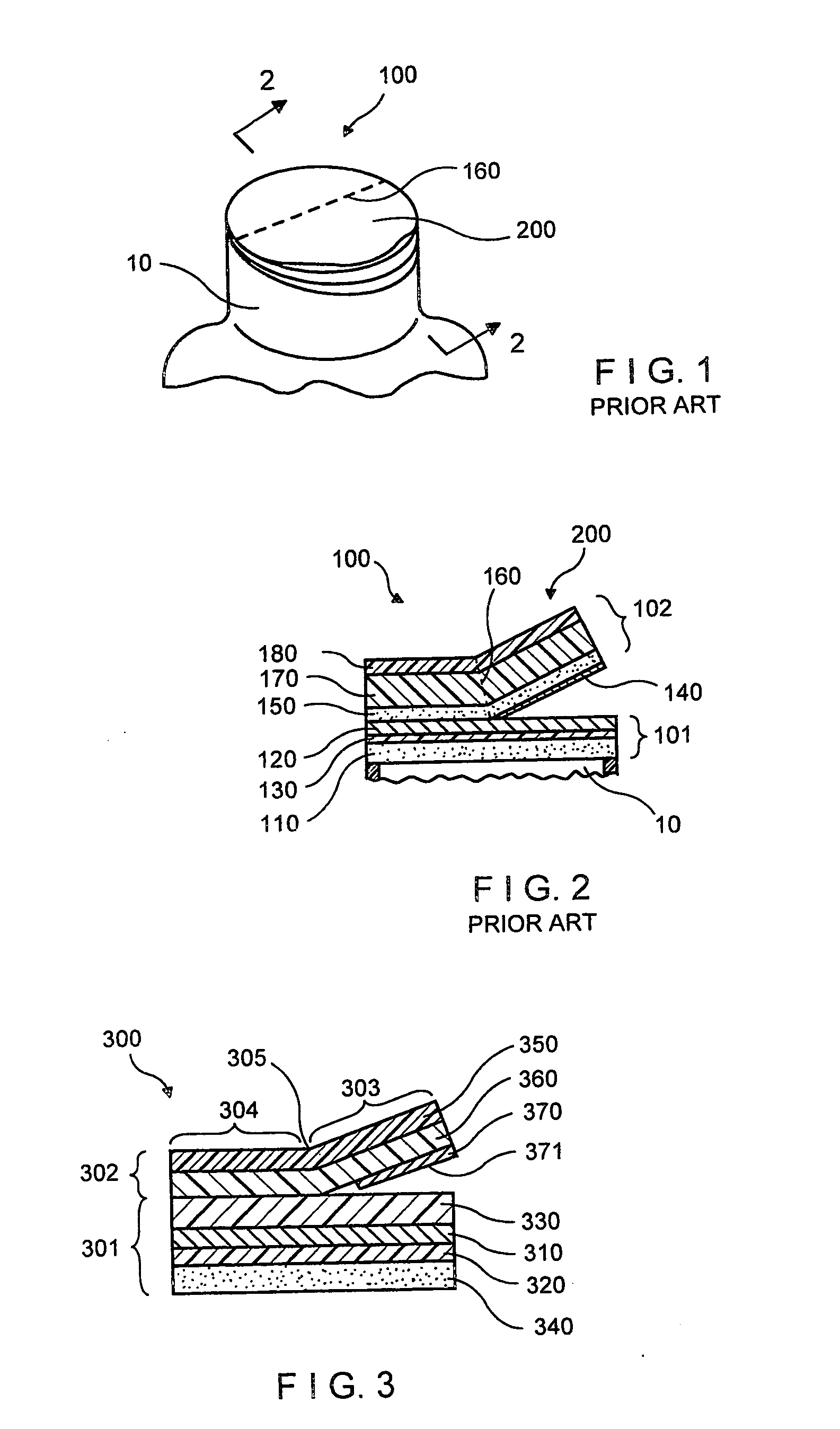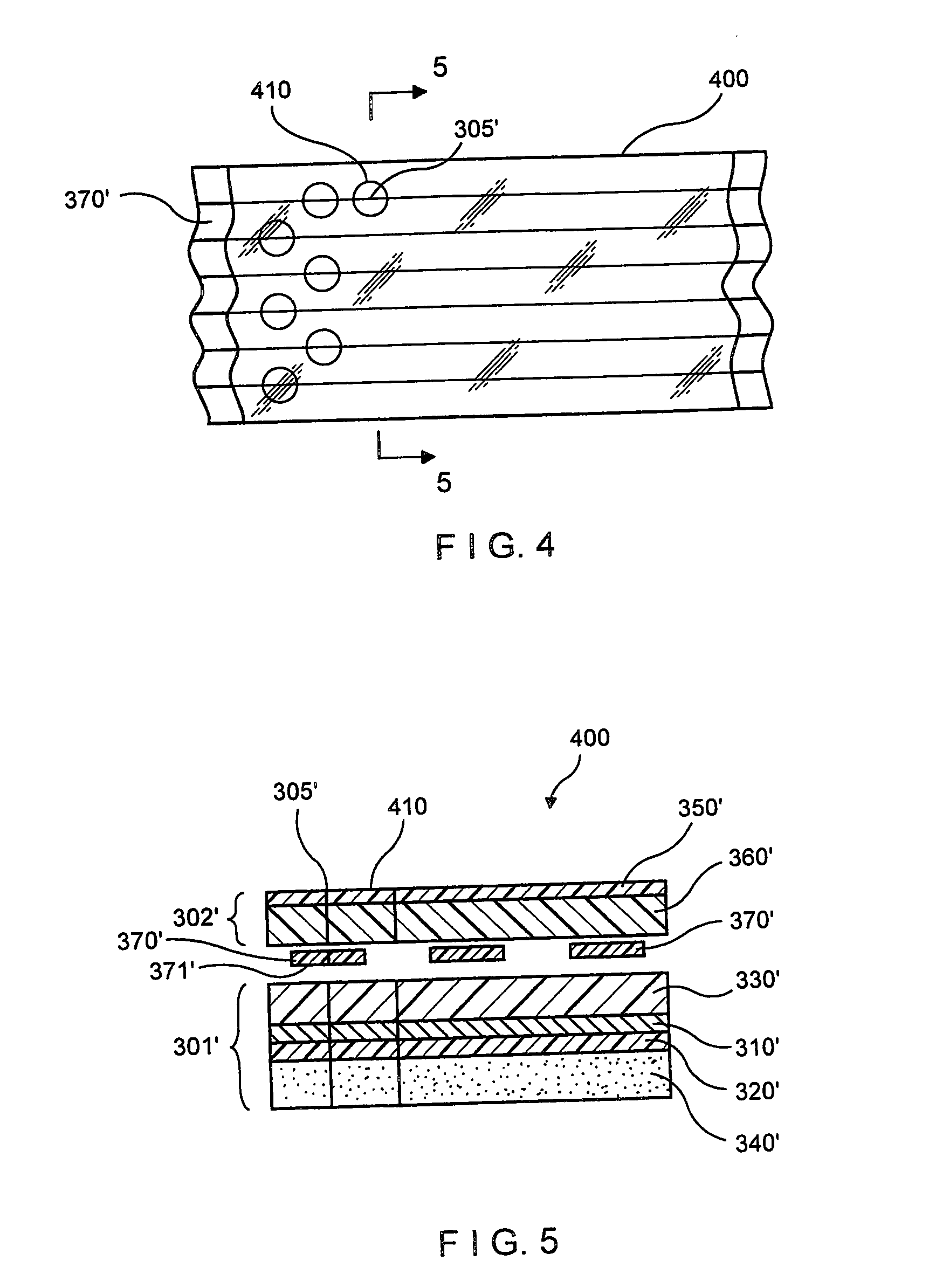Pull-tab sealing member with improved heat distribution for a container
a technology of sealing member and pull-tab, which is applied in the field of pull-tab sealing member, can solve the problems of affecting the sealing performance of the container, the use of pet release layer alone does not provide a fully satisfactory seal, and the corrosion of the foil layer can also present a problem, so as to improve the sealing characteristics, improve the adherence of the sealing member, and improve the heat distribution
- Summary
- Abstract
- Description
- Claims
- Application Information
AI Technical Summary
Benefits of technology
Problems solved by technology
Method used
Image
Examples
example 1
[0033] A 0.7 mil aluminum foil sheet was adhered to a 0.5 mil PET film with adhesive. A 1.5 mil sealant film was then adhesive laminated to the PET surface of the foil / PET laminate. The three ply laminate was then adhered to a 3 mil polyolefin film layer with urethane adhesive to form a bottom sheet. The olefin film layer was a commercially available resin blend sold under the trade name Imaflex® HD Double White PE, which is a monolayer polyethylene film blend of high density and medium density PE with a 70% by weight high density component. The olefin film was pigmented. The overall density of the film was 0.978 g / cm3. The top sheet was adhered to the bottom sheet with a thermal bonding process after 0.5 mil PET tabbing strips were inserted therebetween. The bottom side of the tabbing strips was coated with a silicone release coating to insure that they did not adhere to the olefin film top layer of the bottom sheet. Circular seals, approximately 1.5 inches in diameter, were die cu...
example 2
[0034] Following the procedure of Example 1, a 0.7 mil aluminum foil sheet was adhered to a 0.5 mil PET film with adhesive. A 1.5 mil sealant film was then adhesive laminated to the PET surface of the foil / PET laminate. The three ply laminate was then adhered to a 3 mil polyolefin film layer, NEX M4129, with urethane adhesive to form a bottom sheet. The NEX (New England Extrusion) M4129 grade film was a monolayer film with a 50% by weight high density component blended with low density polyethylene and a fractional melt index polyethylene. The overall film density was 0.994 g / cm3. The olefin film was pigmented. The top sheet was adhered to the bottom sheet with a thermal bonding process after 0.5 mil PET tabbing strips were inserted therebetween. The bottom side of the tabbing strips was coated with a silicone release coating to insure that they did not adhere to the olefin film top layer of the bottom sheet. Circular seals, approximately 1.5 inches in diameter, were die cut from th...
example 3
[0035] Following the procedure of Example 1, a 0.7 mil aluminum foil sheet was adhered to a 0.5 mil PET film with adhesive. A 1.5 mil sealant film was then adhesive laminated to the PET surface of the foil / PET laminate. The three ply laminate was then adhered to a co-extruded 3 mil polyolefin film layer, NEX C4349WH, with urethane adhesive to form a bottom sheet. The NEX C4349WH grade film was a co-extruded bilayer of polyethylene / polypropylene resins blended with a plastomer polyolefin for toughness. The overall film density was 0.989 g / cm3. The olefin film was pigmented. The top sheet was adhered to the bottom sheet with a thermal bonding process after 0.5 mil PET tabbing strips were inserted therebetween. The bottom side of the tabbing strips was coated with a silicone release coating to insure that they did not adhere to the olefin film top layer of the bottom sheet. Circular seals, approximately 1.5 inches in diameter, were die cut from the strips, with the edge of the tabbing ...
PUM
| Property | Measurement | Unit |
|---|---|---|
| thick | aaaaa | aaaaa |
| density | aaaaa | aaaaa |
| density | aaaaa | aaaaa |
Abstract
Description
Claims
Application Information
 Login to View More
Login to View More - R&D
- Intellectual Property
- Life Sciences
- Materials
- Tech Scout
- Unparalleled Data Quality
- Higher Quality Content
- 60% Fewer Hallucinations
Browse by: Latest US Patents, China's latest patents, Technical Efficacy Thesaurus, Application Domain, Technology Topic, Popular Technical Reports.
© 2025 PatSnap. All rights reserved.Legal|Privacy policy|Modern Slavery Act Transparency Statement|Sitemap|About US| Contact US: help@patsnap.com



